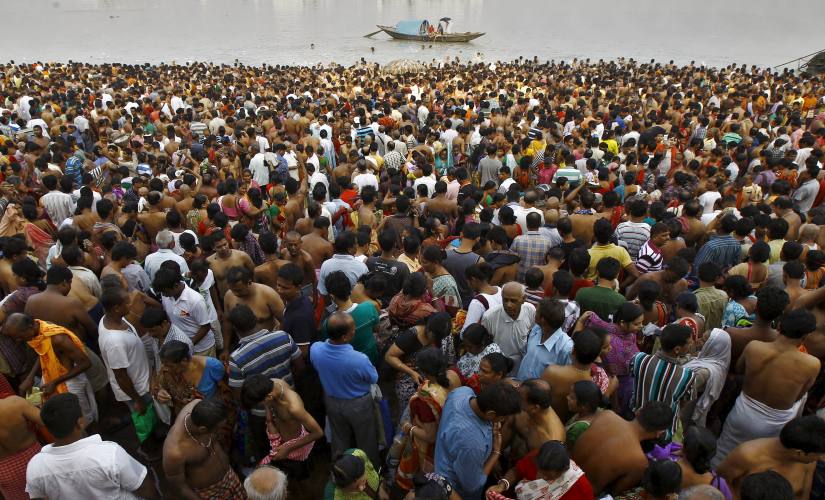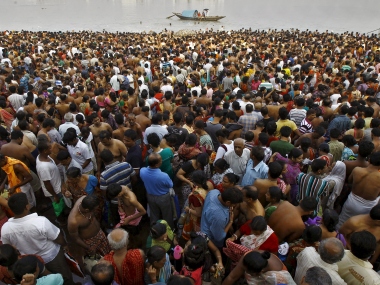You can stand in the middle of a crowded market in Bengaluru, Hyderabad, Chennai or Kochi and say that the common ancestor of the languages Kannada, Telugu, Tamil and Malayalam was brought to India by migrants from West Asia some 8,000 years ago, and no one is likely to care or protest. You could stand in the middle of Jharkhand and say that Austroasiatic languages such as Mundari, Santali and Ho came to India from Southeast Asia around 4,000 years ago, and no one is likely to raise a finger against you. You could go to Manipur and tell them that their language, Meitei, belongs to the Tibeto-Burman family and was brought to India from East Asia and they aren’t likely to be too bothered. You can stand anywhere in India and say that the earliest Indians were Out of Africa migrants who reached South Asia some 65,000 years ago and no one would really mind. But if you were to say that an early version of Sanskrit was brought to India from central Asia by pastoralists who called themselves ‘Aryans’, expect the skies to open and pour condemnation down on you. Thundering articles will be written and published three at a time on right-wing websites; trolls will hound you; and there will be calls for you to be expatriated, excoriated or even exterminated. Why is this so? Why is there a special sensitivity to the issue of ‘Aryan’ migration alone? What accounts for the touchiness to the question of the arrival of Indo-European-language speakers in India? [caption id=“attachment_5799761” align=“alignnone” width=“825”]  Representational image. Reuters/Rupak De Chowdhuri[/caption] The answer is simple: it is because the fact that an early version of Sanskrit came from outside goes against the right-wing claim that Indian culture is identical or synonymous with the ‘Vedic’ culture of the ‘Aryans’, who, according to them, had been in India since ‘time immemorial’. Therefore, to ask when Indo-European languages reached India would be seen to be the same as asking, ‘when did we import our culture?’ It would also call to question their abhorrence of all external cultural influences. But this is ridiculous on two counts. First of all, Indian culture is not synonymous with, or identical to, ‘Aryan’ or ‘Sanskrit’ or ‘Vedic’ culture. ‘Aryan’ culture was an important stream that contributed to creating the unique Indian civilisation as we know it today, but by no means was it the only one. There were other streams that have contributed equally to making Indian civilisation what it is. Second, to say that Indo-European languages reached India at a particular historical juncture is not the same as suggesting that the ‘Vedas’ or ‘Sanskrit’ or the ‘Aryan’ culture was imported flat-packed and then reassembled here. ‘Aryan’ culture was most likely the result of interaction, adoption and adaptation among those who brought Indo-European languages to India and those who were already well-settled inhabitants of the region. But what exactly is the evidence for ‘Aryan’ migrations into India? As I write in my book, Early Indians: The Story of Our Ancestors and Where We Came From, until recently, the strongest argument for ‘Aryan’ migrations was linguistic (though there are other arguments as well, such as the strong presence of horse in the earliest Vedic literature and the lack of horse remains or even horse images in the Harappan sites, which predate the Vedic age). About three-quarters of Indians today speak an Indo-European language such as Hindi, Gujarati, Bengali, Punjabi or Marathi. So does about 40 percent of the world, with Spanish, English, French, Portuguese, Iranian, Russian and German being some of the other widely-spoken Indo-European languages. The Indian subcontinent forms the easternmost limit of the Indo-European language family range, there being no large populations speaking any Indo-European languages to our east. The natural question then arises: how did this language family become the dominant language in India? There are only two possible answers: either it came to India from the outside sometime in the past, or it went from India to the rest of the world that is to the west of it. The problem is that though linguistics can detect affinities between languages, it cannot determine the direction in which languages spread. But in the last few years, and especially in the last one year, scientists started analysing ancient DNA taken from the skeletons of humans who lived thousands of years ago. This changed the picture because by analysing ancient DNA taken from the same location at different periods, or from the same period at different locations, geneticists were able to find out what changed when and in what direction people moved. A study released as recently as in March 2018 on the pre-print server bioRXiv and titled ‘The Genomic Formation of South and Central Asia’ examined 69 ancient DNA samples from the periphery of the Harappan Civilisation and found that there was no trace of central Asian ancestry in the populations that lived there before 2100 BCE and that after 2100 BCE, there were indeed traces of central Asian ancestry. While this study did not have ancient DNA from any Harappan site proper, it did have access to the ancient DNA of migrants from the Harappan Civilisation to its peripheral cities, dated to between 3100 and 2200 BCE, and these also had no central Asian ancestry. Further, this study had access to 41 ancient DNA samples from about a thousand years later, dating from after 1200 BCE, from the Swat Valley in today’s Pakistan, which is also a Harappan Civilisation periphery. These samples showed a significant presence of central Asian ancestry. The conclusion, therefore, was inescapable: in the period between 2100 BCE and 1200 BCE, South Asia saw a significant infusion of central Asian steppe ancestry that is still present in the Indian population. Early news reports about the DNA analysis of an ancient skeleton from the Harappan site of Rakhigarhi in Haryana dated to around 2600 BCE, also suggest that it supports the findings of the March 2018 study: of there being no sign of central Asian steppe ancestry in South Asia before 2100 BCE. These ancient DNA findings, by themselves, lead to the inevitable conclusion that ‘Aryans’ migrated into South Asia, but what is equally interesting is that ancient DNA evidence from Europe has also shown, in the last few years, that central Asian steppe pastoralists moved there in large numbers about a thousand years before they reached South Asia, thus causing the spread of Indo-European languages in that continent. The parallels between the two migrations in opposite directions from central Asia, spreading the same family of languages to Europe and to South Asia one thousand years apart, is striking. So, the ‘Aryans,’ it is now clear, migrated to India once upon a time. Just like everyone else. And there is nothing special or frightening about this fact. Almost all regions of the world have seen multiple mass migrations that have changed their demography more than once – including Europe, the Americas, Central Asia, West Asia and East Asia. If anything, the most noticeable thing about India is that despite multiple mass migrations within the last 10,000 years, the lineage of the First Indians who arrived here 65,000 years ago still remains strong: it accounts for 50 to 65 percent of the genetic heritage of most population groups. First Indian ancestry is the genetic glue that holds us together – just as the practices and traditions that were shaped in the crucible of the Harappan Civilisation are perhaps the cultural glue that holds us together. But that is another story. Tony Joseph is the author of the book Early Indians: The Story of Our Ancestors and Where We Came From, published by Juggernaut this month.
The ‘Aryans,’ it is now clear, migrated to India once upon a time. Just like everyone else. And there is nothing special or frightening about this fact.
Advertisement
End of Article


)

)
)
)
)
)
)
)
)



